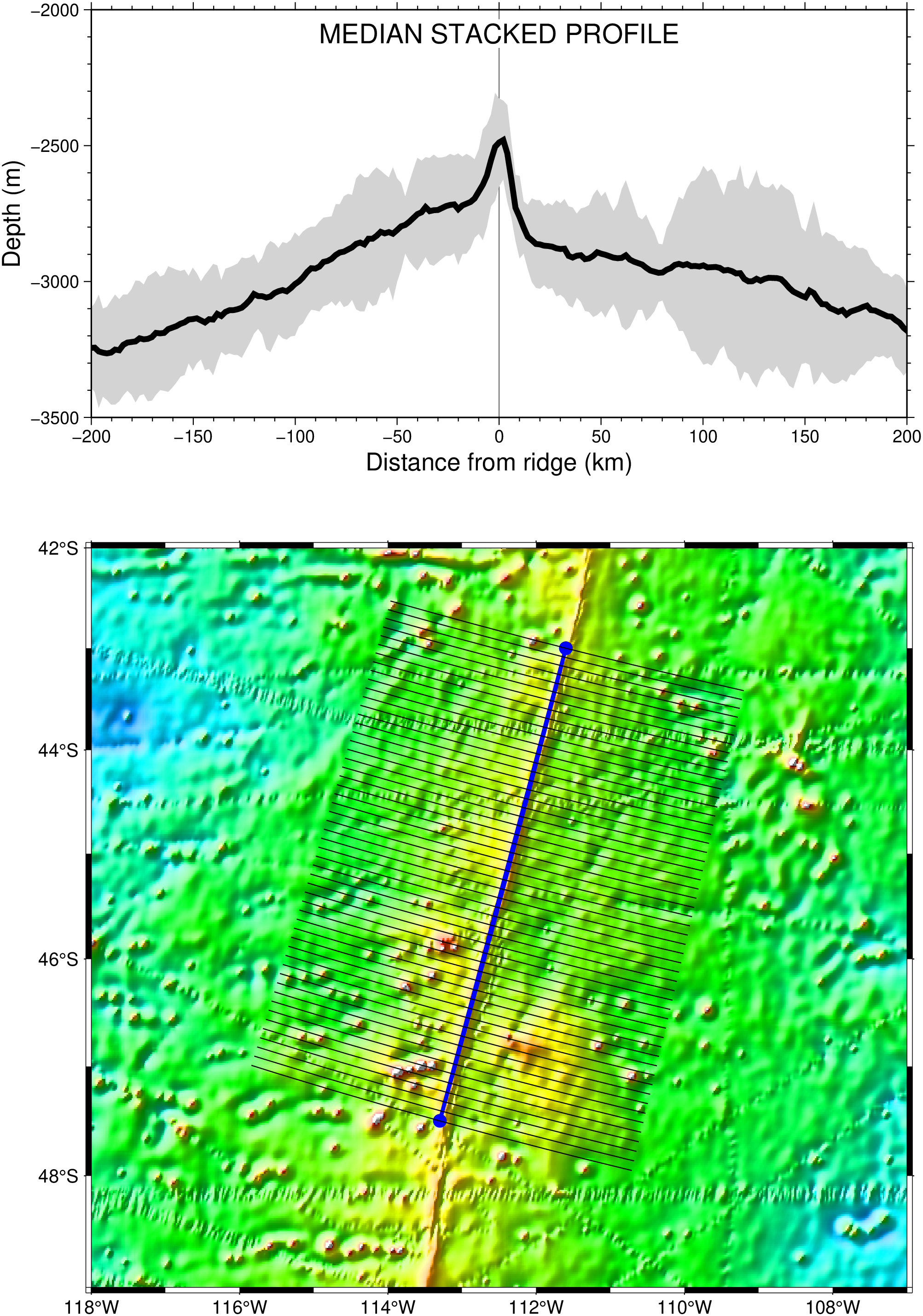(33) Stacking automatically generated cross-profiles
The script produces the plot in Figure. Here we demonstrate how grdtrack can be used to automatically create a suite of crossing profiles of uniform spacing and length and then sample one or more grids along these profiles; we also use the median stacking option to create a stacked profile, showed above the map, with the gray area representing the 2σ confidence bounds on the stacked median profile.
using GMT
makecpt(cmap=:rainbow, range=(-5000,-2000))
G = grdcut("@earth_relief_01m", region=(-118,-107,-49,-42))
grdimage(G, shade=(angle=15, norm="e0.75"), proj=:merc)
#resetGMT() # Need to find a fix for this. It lets the API in a geog mode
# Select two points along the ridge
ridge_pts = [-111.6 -43.0; -113.3 -47.5];
# Plot ridge segment and end points
plot!(ridge_pts, region=G, symbol=(symb=:circle, size=0.25), fill=:blue, pen=(2,:blue))
# Generate cross-profiles 400 km long, spaced 10 km, samped every 2km
# and stack these using the median, write stacked profile
table, stack = grdtrack(G, ridge_pts, equidistant="400k/2k/10k+v", stack="m+s")
plot!(table, pen=0.5)
# Show upper/lower values encountered as an envelope
plot!(stack[:,[1,2,6,7]], region=(-200,200,-3500,-2000), frame=(axes=:WSne, annot=:auto, ticks=:auto),
xaxis=(grid=1000, label="Distance from ridge (km)"), ylabel="Depth (m)",
figsize=(15,7.5), fill=:lightgray, close=(envelope=true,), yshift=16)
plot!(stack, pen=3)
text!(mat2ds([0 -2000], "MEDIAN STACKED PROFILE"), fill=:white, font=14, justify=:TC,
offset=(away=true, shift=0.25), show=true)
© GMT.jl. Last modified: October 06, 2023. Website built with Franklin.jl and the Julia programming language.
These docs were autogenerated using GMT: v1.33.1
